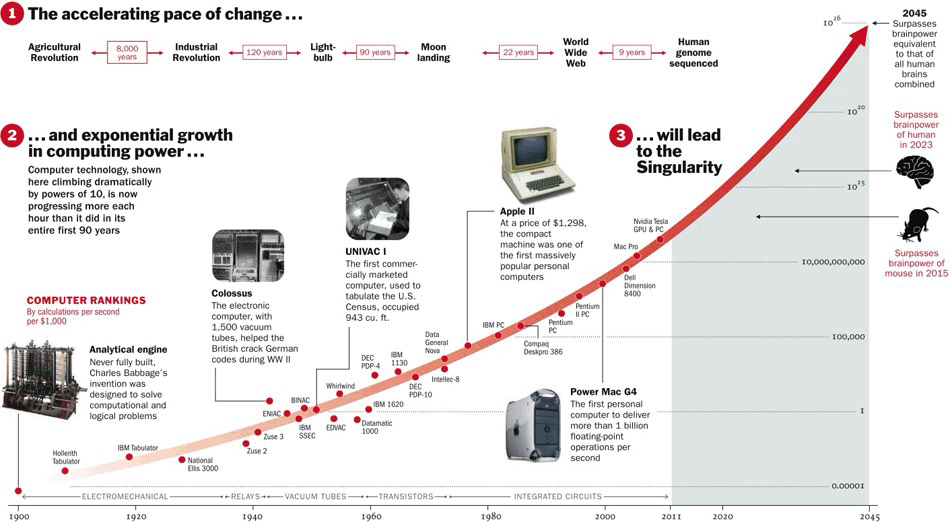In Part One of this series, I discussed an overarching trend in computer science called Moore’s Law. This law (think of it as a law of computer nature) states that roughly every two years, the overall processing power of the conventional computer will double. Now, while this may be exciting to the consumer who cannot wait to get their hands on a faster computer for the same price; the consequences of this law for the computer engineers who create the devices, have never been more challenging.
The most difficult of these challenges is that as more components are put into the central processing unit (CPU) of a computer, the components will need to become so small that they will eventually reach the size of a single atom! Once at that hard limit, there will simply be no more room left in the microchip for more components. Consequently, the method of how we manufacture computers will need to be drastically reimagined if technological innovation is to continue in the foreseeable future.

Moore’s Law can be directly linked to technological innovation. As our computers become more powerful, cutting-edge technologies proliferate. Credit: Humanswlord (WordPress)
That said, as many novel options for how to compute information differently have become available, scientists have wondered if the problem lies in what we compute our information with. Particularly, what if extending Moore’s Law for the next century meant that we only had to change the material we make our computers with? Enter the miracle material, graphene.
Put simply, graphene is a very thin layer of carbon, measuring only one atom thick. These single carbon atoms are packed together tightly to form what is known as a hexagonal honeycomb lattice.
Graphene in a Hexagonal Honeycomb Lattice. Each carbon atom (represented by the “C”) is perfectly bonded to it’s neighbours. Credit: Karl Bednarik (Wikimedia Commons).
This unique structure of carbon atoms makes graphene the thinnest, lightest, strongest, best heat and electricity conducting material known to science. Not only that, but due to carbon being the fourth most abundant element in the universe, it could very well be the most sustainable material also. However, it isn’t what graphene is that makes it so spectacular, but what it can do when put it to the task of computation.
In 2013, IBM showed their first generation of graphene-based integrated circuit (IC). Just this last year, IBM announced another breakthrough in creating its next generation of IC built with graphene. In this new generation of graphene based IC, IBM layered graphene in the channels of a microchip (the spots where electricity is conducted and electrons are moved around). From applying graphene in this way, IBM found the microchip to be 10,000 times faster then the current silicon alternative which uses copper. From this, IBM claims that graphene based electronics possess the potential to reach speeds upwards of 500ghz (that is 500 billion operations per second or 20 times faster then the conventional laptops sold today). This is made possible because graphene has little to no electrical resistance, which means it can move electrons around the processor much more efficiently then copper ever could.
With that said, there are still many hurdles which must be passed before graphene makes it into your next mobile device. For one, graphene based IC’s remain incredibly difficult to build using traditional processes for manufacturing microchips. IBM stated that current methods of creating graphene for use in IC’s remain expensive and inefficient. That said, it is only a matter of time before manufacturing processes are streamlined and the great graphene revolution in computer science begins!
For more information on graphene, check out this video by SciShow below.

Vive la graphene!
– Corey Wilson
